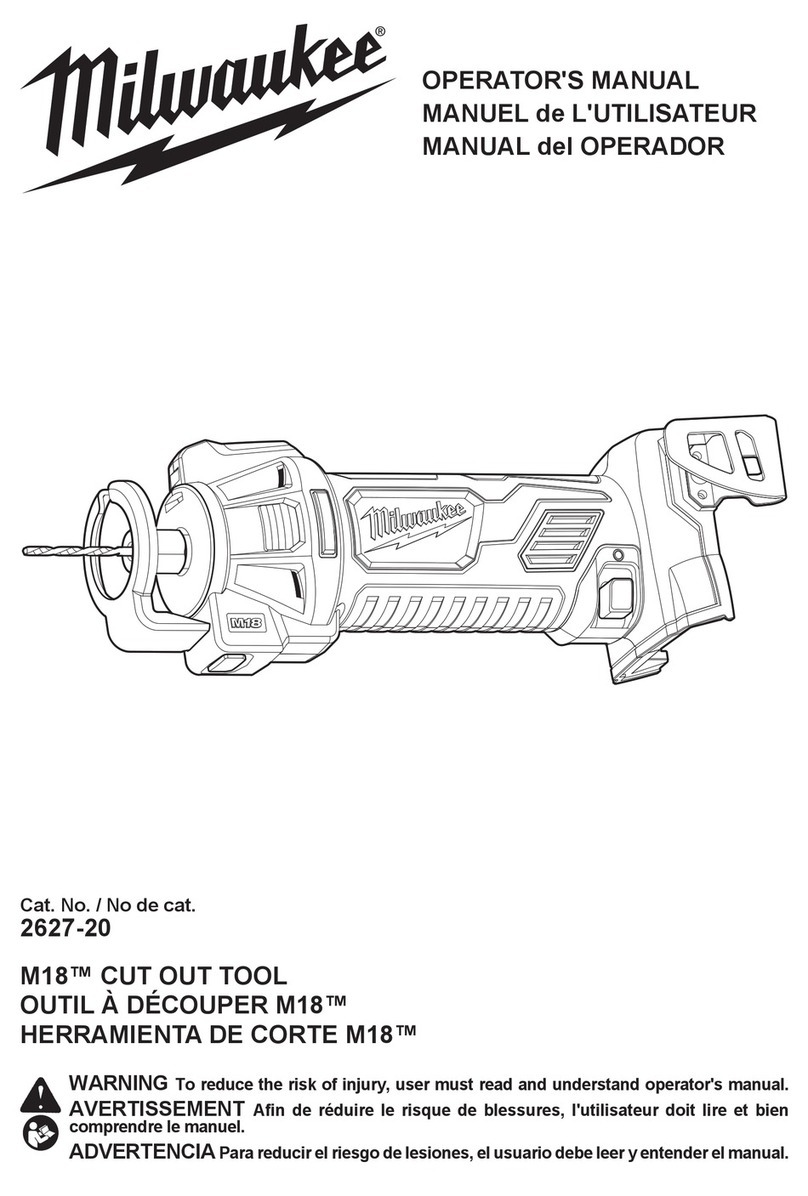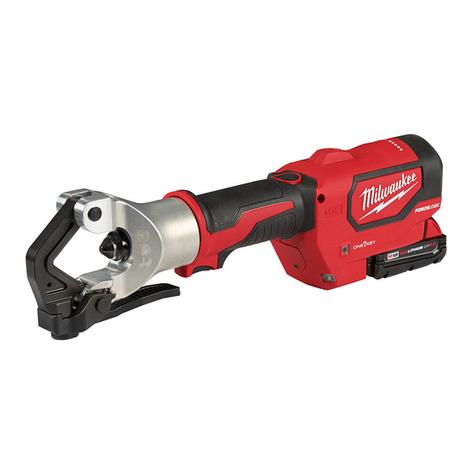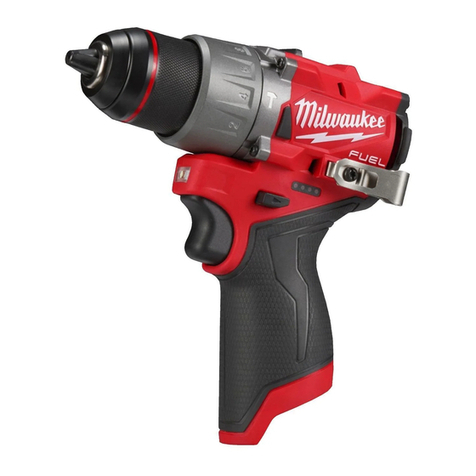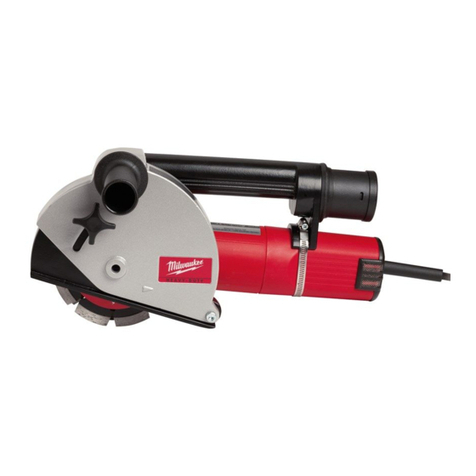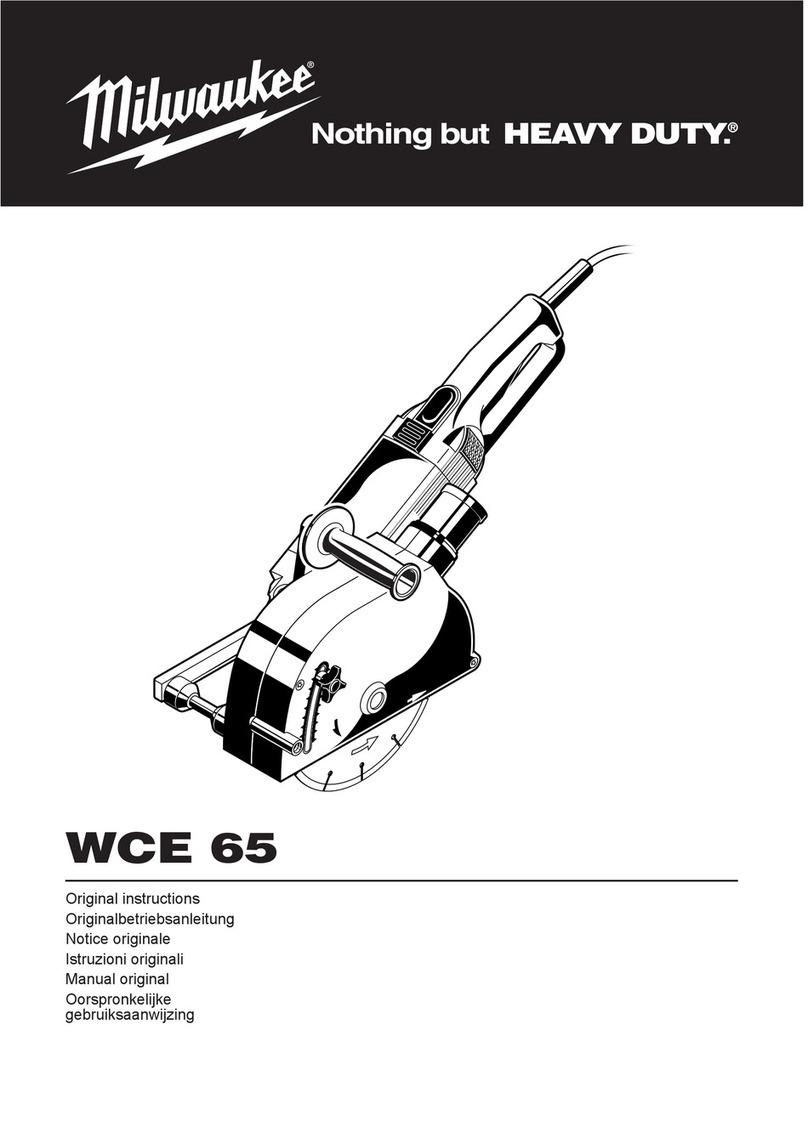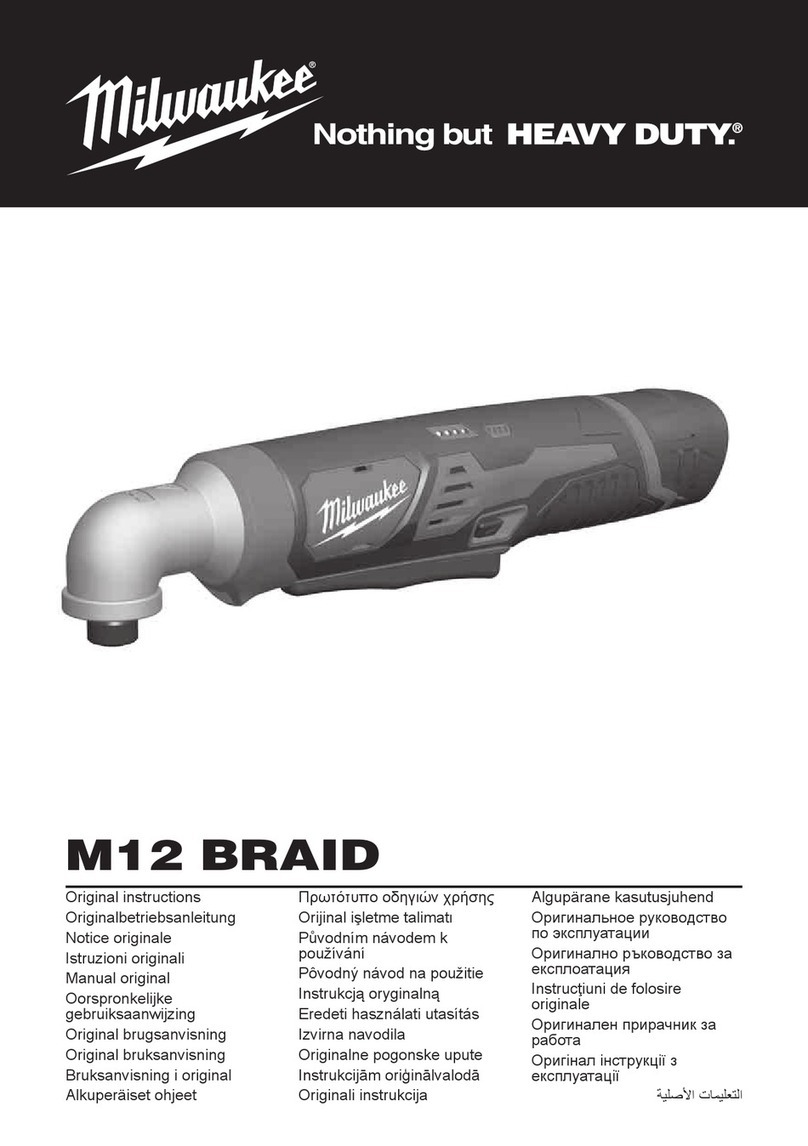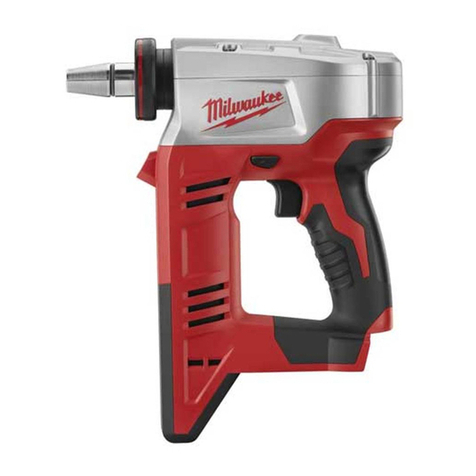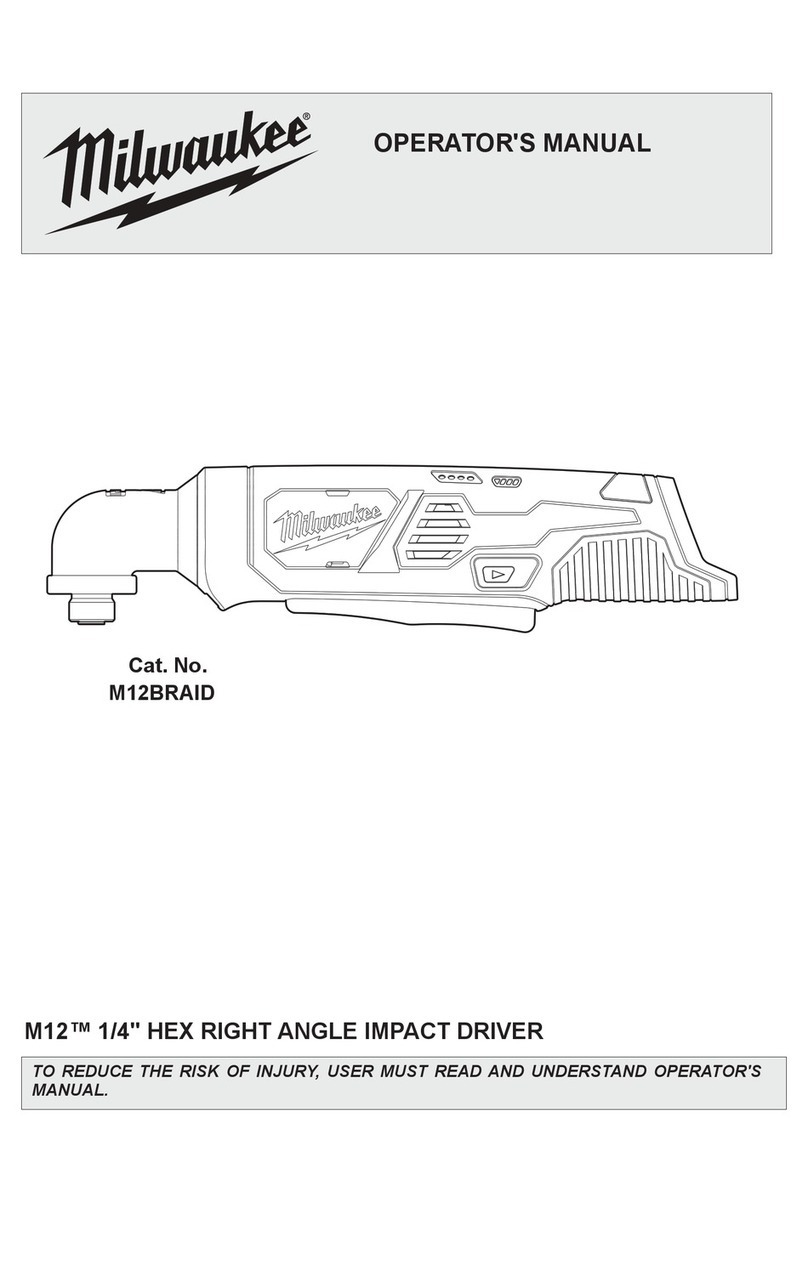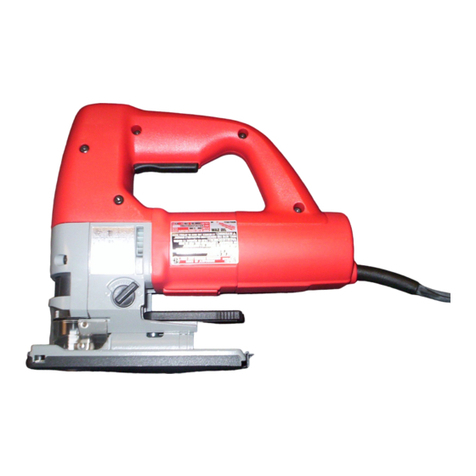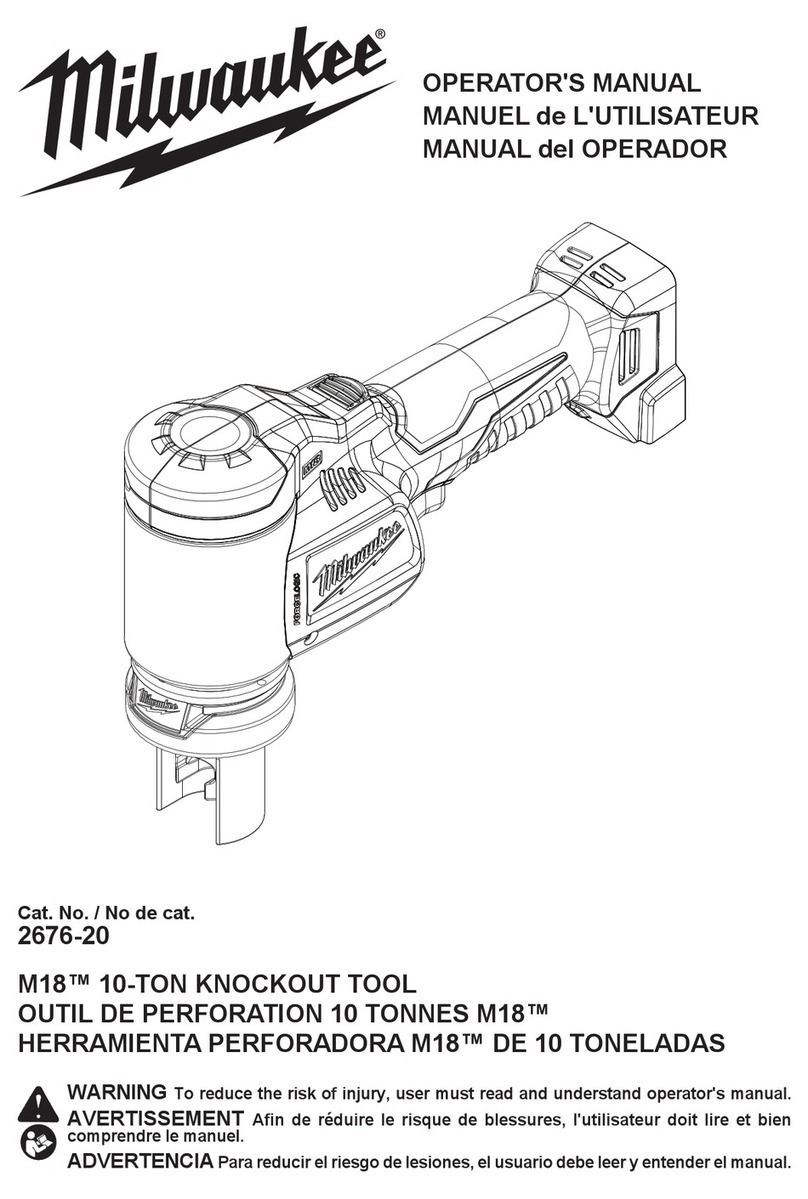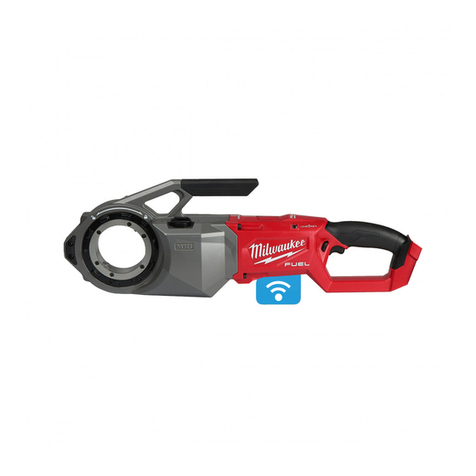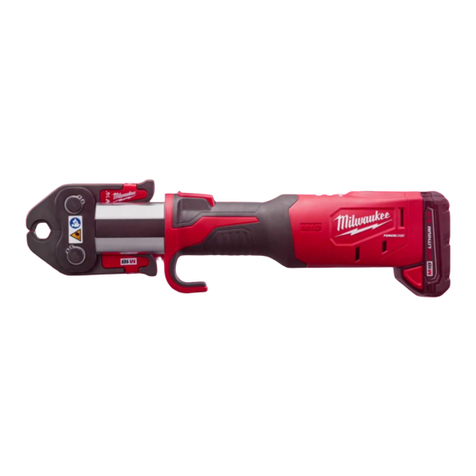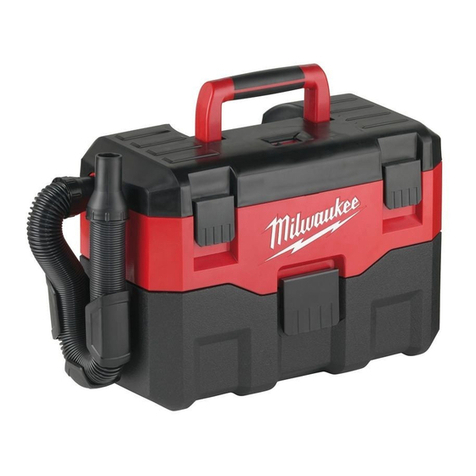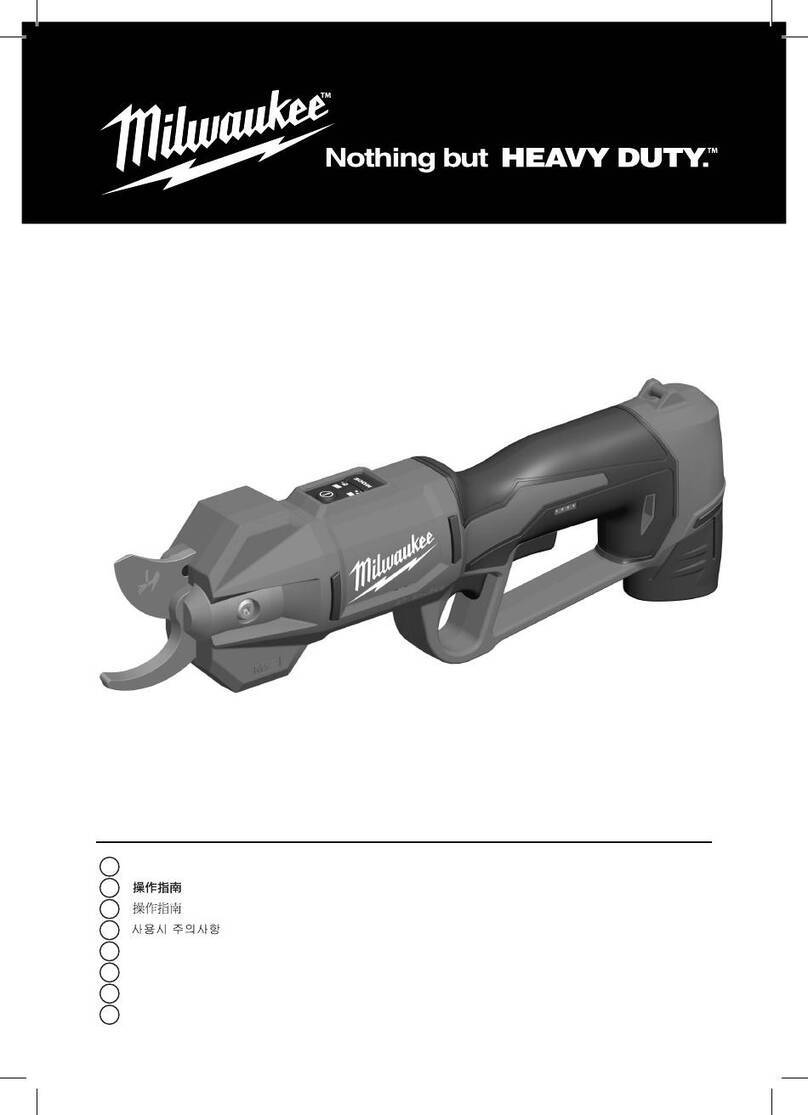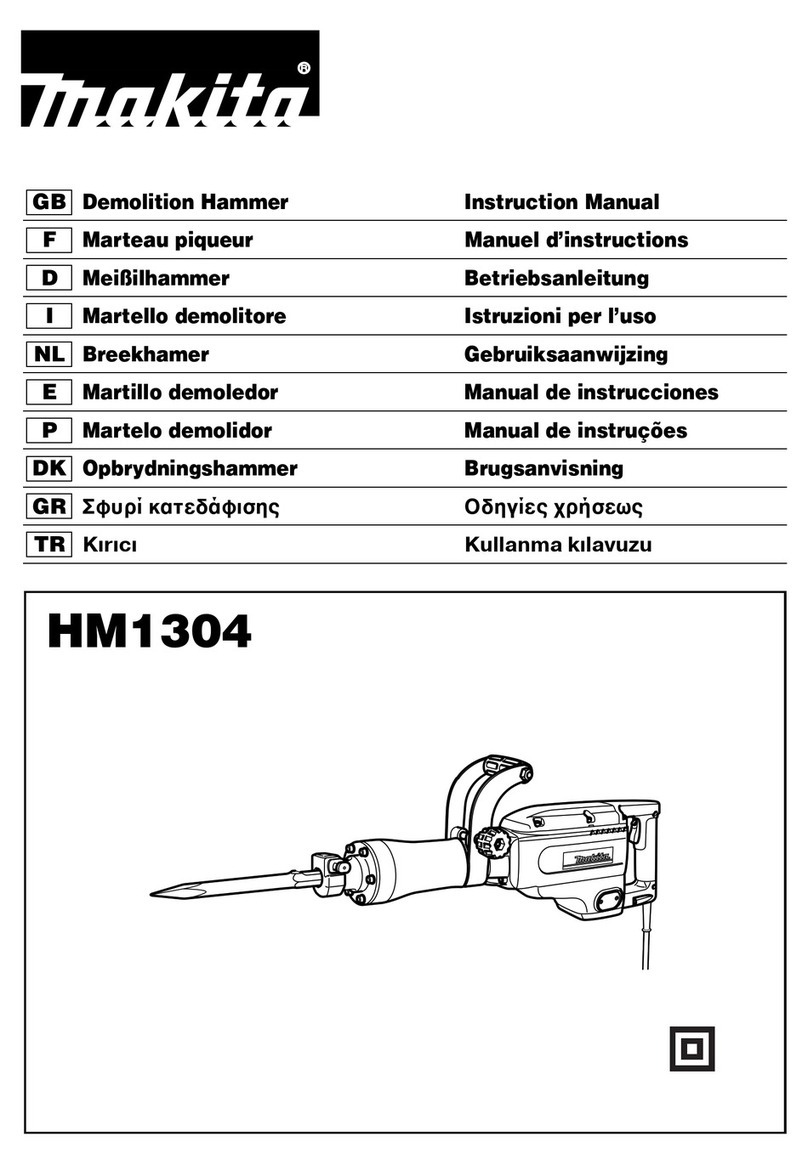
page 8
1. Veillez à ce que laire de travail soit propre et bien éclairée.
Le désordre et le manque de lumière favorisent les accidents.
2. Nutilisez pas doutils électriques dans une atmosphère ex-
plosive, par exemple en présence de liquides, de az ou de
poussières inflammables. Les outils électriques créent des
étincelles qui pourraient enflammer les poussières ou les vapeurs.
3. Tenez à distance les curieux, les enfants et les visiteurs
pendant que vous travaillez avec un outil électrique. ls
pourraient vous distraire et vous faire faire une fausse manoeuvre.
nstallez des barrières ou des écrans protecteurs si nécessaire.
4. Les outils mis à la terre doivent être branchés dans une
prise de courant correctement installée et mise à la terre
conformément à tous les codes et rè lements pertinents.
Ne modifiez jamais la fiche de quelque façon que ce soit,
par exemple en enlevant la broche de mise à la terre.
Nutilisez pas dadaptateur de fiche. Si vous nêtes pas
certain que la prise de courant est correctement mise à la
terre, adressez-vous à un électricien qualifié. En cas de
défaillance ou de défectuosité électrique de loutil, une mise à la
terre offre un trajet de faible résistance à lélectricité qui autrement
risquerait de traverser lutilisateur.
5. Les outils à double isolation sont équipés dune fiche
polarisée (une des lames est plus lar e que lautre), qui ne
peut se brancher que dune seule façon dans une prise
polarisée. Si la fiche nentre pas parfaitement dans la prise,
inversez sa position ; si elle nentre toujours pas bien,
demandez à un électricien qualifié dinstaller une prise de
courant polarisée. Ne modifiez pas la fiche de loutil.
La double isolation élimine le besoin dun cordon dalimentation à
trois fils avec mise à la terre ainsi que dune prise de courant mise à
la terre.
6. Évitez tout contact corporel avec des surfaces mises à la
terre (tuyauterie, radiateurs, cuisinières, réfri érateurs,
etc.). Le risque de choc électrique est plus grand si votre corps est
en contact avec la terre.
7. Nexposez pas les outils électriques à la pluie ou à leau. La
présence deau dans un outil électrique augmente le risque de choc
électrique.
8. Ne maltraitez pas le cordon. Ne transportez pas loutil par
son cordon et ne débranchez pas la fiche en tirant sur le
cordon. Nexposez pas le cordon à la chaleur, à des huiles, à
des arêtes vives ou à des pièces en mouvement. Remplacez
immédiate-ment un cordon endomma é. Un cordon
endommagé augmente le risque de choc électrique.
9. Lorsque vous utilisez un outil électrique à lextérieur,
employez un prolon ateur pour lextérieur marqué « W-A »
ou « W ». Ces cordons sont faits pour être utilisés à lextérieur et
réduisent le risque de choc électrique.
en mouvement. Des vêtements flottants, des bijoux ou des
cheveux longs risquent dêtre happés par des pièces en mouvement.
12. Méfiez-vous dun démarra e accidentel. Avant de brancher
loutil, assurez-vous que son interrupteur est sur ARRÊT. Le
fait de transporter un outil avec le doigt sur la détente ou de brancher
un outil dont linterrupteur est en position MARCHE peut mener tout
droit à un accident.
13. Enlevez les clés de ré la e ou de serra e avant de démarrer
loutil. Une clé laissée dans une pièce tournante de loutil peut
provoquer des blessures.
14. Ne vous penchez pas trop en avant. Maintenez un bon appui
et restez en équilibre en tout temps. Un bonne stabilité vous
permet de mieux réagir à une situation inattendue.
15. Utilisez des accessoires de sécurité. Portez toujours des
lunettes ou une visière. Selon les conditions, portez aussi un
masque antipoussière, des bottes de sécurité antidérapantes, un
casque protecteur et/ou un appareil antibruit.
10. Restez alerte, concentrez-vous sur votre travail et faites
preuve de ju ement. Nutilisez pas un outil électrique si
vous êtes fati ué ou sous linfluence de dro ues, dalcool
ou de médicaments. Un instant dinattention suffit pour entraîner
des blessures graves.
11. Habillez-vous convenablement. Ne portez ni vêtements
flottants ni bijoux. Confinez les cheveux lon s. Napprochez
jamais les cheveux, les vêtements ou les ants des pièces
16. Immobilisez le matériau sur une surface stable au moyen
de brides ou de toute autre façon adéquate. Le fait de tenir la
pièce avec la main ou contre votre corps offre une stabilité
insuffisante et peut amener un dérapage de loutil.
17. Ne forcez pas loutil. Utilisez loutil approprié à la tâche. Loutil
correct fonctionne mieux et de façon plus sécuritaire. Respectez
aussi la vitesse de travail qui lui est propre.
18. Nutilisez pas un outil si son interrupteur est bloqué. Un outil
que vous ne pouvez pas commander par son interrupteur est
dangereux et doit être réparé.
19. Débranchez la fiche de loutil avant deffectuer un ré la e,
de chan er daccessoire ou de ran er loutil. De telles mesures
préventives de sécurité réduisent le risque de démarrage accidentel
de loutil.
20. Ran ez les outils hors de la portée des enfants et dautres
personnes inexpérimentées. Les outils sont dangereux dans
les mains dutilisateurs novices.
21. Prenez soin de bien entretenir les outils. Les outils de coupe
doivent être toujours bien affûtés et propres. Des outils bien
entretenus, dont les arêtes sont bien tranchantes, sont moins
susceptibles de coincer et plus faciles à diriger. Nutilisez pas un
outil défectueux. Fixez-y une étiquette marquée « Hors dusage »
jusquà ce quil soit réparé.
22. Soyez attentif à tout désali nement ou coincement des
pièces en mouvement, à tout bris ou à toute autre condition
préjudiciable au bon fonctionnement de loutil. Si vous
constatez quun outil est endomma é, faites-le réparer
avant de vous en servir. De nombreux accidents sont causés par
des outils en mauvais état.
23. Nutilisez que des accessoires que le fabricant recommande
pour votre modèle doutil. Certains accessoires peuvent convenir
à un outil, mais être dangereux avec un autre.
24. La réparation des outils électriques doit être confiée à un
réparateur qualifié. Lentretien ou la réparation dun outil électrique
par un amateur peut avoir des conséquences graves.
25. Pour la réparation dun outil, nemployez que des pièces de
rechan e dori ine. Suivez les directives données à la sec-
tion « Réparation » de ce manuel. Lemploi de pièces non
autorisées ou le non-respect des instructions dentretien peut créer
un risque de choc électrique ou de blessures.
VOUS DEVEZ LIRE ET COMPRENDRE TOUTES LES INSTRUCTIONS
Le non-respect, même partiel, des instructions ci-après entraîne un risque de choc
électrique, d'incendie et/ou de blessures raves.
CONSERVEZ CES INSTRUCTIONS
RÉPARATION
AVERTISSEMENT!
AIRE DE TRAVAIL
SÉCURITÉ ÉLECTRIQUE
SÉCURITÉ DES PERSONNES
UTILISATION ET ENTRETIEN DES OUTILS
RÈGLES DE SÉCURITÉ GÉNÉRALES
